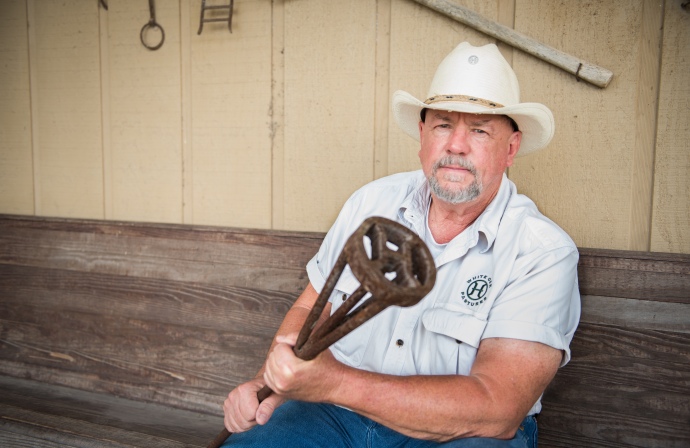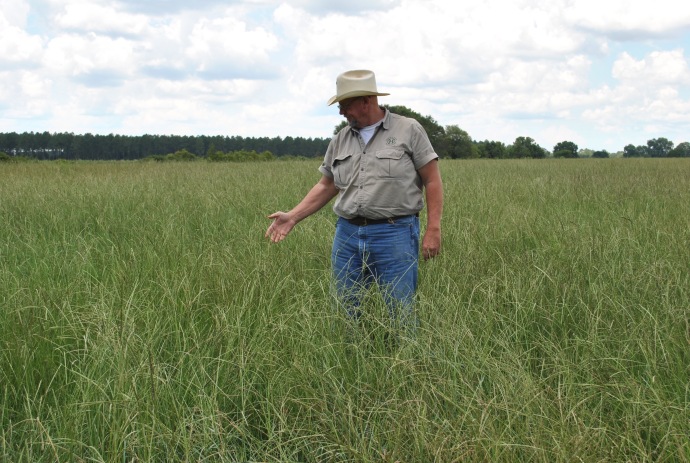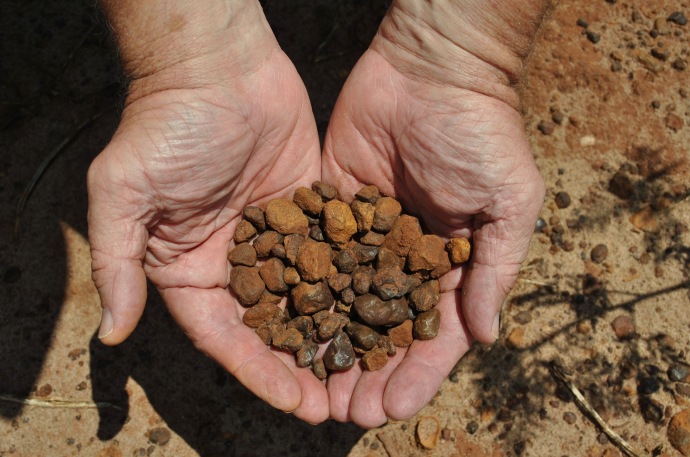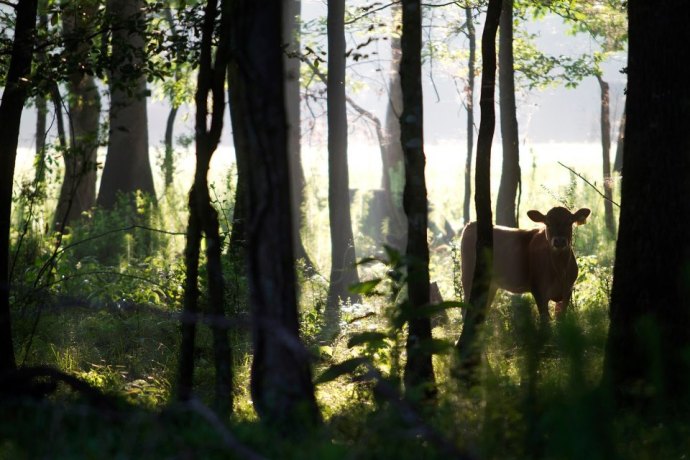Today, I interviewed Jenni Harris, 5th generation of White Oak Pastures. We all know the typical questions asked during an interview about the farm, so I wanted this one to be a little different. If you have any additional questions for her, please feel free to ask in the comments section!
Jenni graduated from Valdosta State University in 2009. She moved to Atlanta and worked at Buckhead Beef for one year, before moving back to the farm. Her dad, better known as Will Harris, gave all three of his daughters the option to work at the farm, but only after working for someone else for at least a year. Jenni fulfilled that duty, and started working as the Marketing Manager at White Oak Pastures immediately after. She has now immersed herself into several different roles at the farm, but her daily job consists of making wholesale customers happy. She spends a lot more time in front of her computer these days, but every now and then you can find her feeding abandoned baby lambs, greeting customers in the farm store, and riding around on the 4-wheeler keeping a check on the cows.
1. Atlanta and Bluffton couldn’t be more opposite. What led you back to the farm? ATLANTA WAS GREAT, AND I WAS ONE OF THE FEW FOLKS FROM RURAL AMERICA TO ENJOY THE CITY, BUT, I ENJOYED IT KNOWING IT WAS TEMPORARY. I KNEW I WANTED TO RAISE CHILDREN WHERE I WAS RAISED, I WANTED THEM TO HAVE THE EDUCATION, PASSION, RESPECT, AND DISCIPLINE THAT I WAS RAISED WITH YEARS AGO.
2. What’s your favorite part about working on the farm? THE PEOPLE. WHETHER IT’S OTHER FOLKS THAT WORK ON THE FARM WITH ME, OR CUSTOMERS THAT WE DEAL WITH WEEKLY, THE PEOPLE IN THE SUSTAINABLE AGRICULTURE INDUSTRY ARE SOME OF THE BEST IN THE WORLD. I WOULD NOT TRADE MY RELATIONSHIPS WITH THIS GROUP FOR ANYTHING.
3. What do you consider your biggest accomplishment since working here? BECOMING ME. AS THE 5TH GENERATION OF WHITE OAK PASTURES, AND WORKING ALONGSIDE MY FATHER, I FOUND IT HARD TO ESTABLISH WHAT I “WAS” OR “WANTED TO BE.” IT SOUNDS SILLY, BUT DECIDING HOW I COULD CONTRIBUTE WAS A DAILY STRUGGLE FOR ME, BUT THROUGH 5 YEARS OF FIGURING OUT WHAT I HATED AND WHAT I LOVED, I FINALLY FOUND “ME.”
4. Future goals? Professionally and personally? I WANT A FAMILY TO SHARE THIS FARM WITH. I WANT TO SHARE THIS FARM WITH NOT ONLY MY CHILDREN, BUT EVERYONE ELSE THAT CONTRIBUTES TO IT. ALL OF THESE PEOPLE ARE WHO I CONSIDER “FAMILY.” GROWING THIS FAMILY WILL CONTINUE TO ADD VALUE TO WHAT IS ALREADY SO STRONG. PROFESSIONALLY- I JUST WANT TO KEEP WALKING THE JOURNEY THAT WHITE OAK PASTURES HAS BEGUN.
5. If you weren’t at the farm, where would you be? THAT’S A HARD QUESTION, BUT PROBABLY IN SOME BORING, STRAIGHT-LACED CORPORATE COMPANY, ANXIOUSLY WAITING ON MY QUARTERLY REVIEW TO PROVE THAT I WAS DOING “ABOVE SATISFACTORY.” INSTEAD, I GET TO LIVE EACH DAY, KNOWING I AM DOING SOMETHING MEANINGFUL.
6. You’re on many different boards and a part of several organizations, how do you have time for it all? I THINK IT’S SAFE TO ASSUME I’M NOT THE BEST BOARD MEMBER IN THE ROOM. I’M ONLY ON BOARDS THAT ARE RELATED TO WHAT WE DO AT WHITE OAK PASTURES. THANKFULLY, THEY ARE ALL FORGIVING BOARDS, WHEN I’M DOUBLE BOOKED OR OUT OF TOWN. HONESTLY, THESE BOARDS ARE A WAY TO LEARN HOW WHITE OAK PASTURES CAN PLAY A BETTER ROLE IN THE BIG PICTURE. YOU KNOW THE SAYING, “I CAN’T SEE THE FORREST BECAUSE OF THE TREES.” THESE BOARDS ARE A WAY TO GET AWAY FROM THE TREES, SO I CAN SEE THE FORREST.
7. We get this question a lot, but do you think WOP will ever have dairy cows? SOMEONE SMART ONCE TOLD ME TO NEVER SAY “NEVER.” ONLY TIME WILL TELL IF THERE IS A PLACE IN THE MARKET FOR WHITE OAK PASTURES DAIRY.
8. What’s your favorite meal at The Pavilion? ALL OF IT, BUT MORE SPECIFICALLY, THE FARMER JOHN BURGER, NAMED FOR MY FAMOUS BROTHER-IN-LAW. THE BURGER CONSISTS OF WHITE OAK PASTURES BEEF, HOME-MADE CHEESE AND BREAD, WHITE OAK PASTURES LETTUCE AND TOMATO (WHEN IT’S IN SEASON, OF COURSE) TOPPED OFF WITH ONE OF OUR PASTURE RAISED EGGS.
9. If someone came to the farm for the first time, knew very little about grassfed and pasture raised animals, what would you recommend for them to purchase? GROUND BEEF IS THE “GATEWAY DRUG” FOR WHITE OAK PASTURES. OUR GROUND BEEF IS ONE OF MY PERSONAL FAVORITES, BUT ALSO SOMETHING THAT’S EASY TO COOK. IF YOU CAN’T COOK OUR GROUND BEEF, THEN YOU SHOULD RECONSIDER PREPARING ANYTHING ELSE THAT HAS BEEN RAISED OUTSIDE EATING GRASS OR BUGS AND GRUBS.
10. What’s your favorite meal to cook at home? I LOVE TO COOK EVERYTHING! RARELY IS IT PERFECT, BUT ALWAYS IS IT INTERESTING. I LIKE DIFFERENT THINGS, LIKE DUCK AND SAUSAGE, BUT MY GIRLFRIEND LIKES CHICKEN AND SPAGHETTI. EVERY MEAL IS A COMPROMISE…

Check in next week to learn a little more about Jenni’s younger sister, Jodi Harris.













